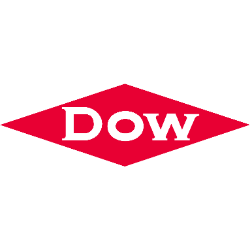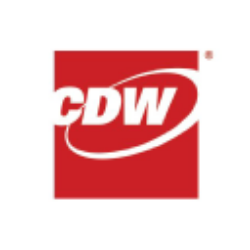Apollo Global Management, Inc.: Comprehensive Valuation, Financial, and Market Sentiment Analysis
Table of Contents
-
Quantitative Valuation Analysis
- Financial Performance Overview
- Key Financial Metrics & Ratios
- Discounted Cash Flow (DCF) Analysis
- Relative Valuation (Comparables)
-
Financial Analysis
- Revenue Streams & Profitability
- Assets Under Management (AUM) Growth
- Capital Allocation & Dividend Policy
-
Qualitative Valuation Drivers
- Strategic Positioning & Competitive Advantages
- Market Leadership in Private Credit & Origination
- Global Expansion & Wealth Management Initiatives
-
Market Sentiment & Risks
- Investor Sentiment & Analyst Outlook
- Key Risks & Challenges
-
Conclusion & Investment Recommendation
1. Quantitative Valuation Analysis
Financial Performance Overview
Apollo Global Management (NYSE: APO) has demonstrated consistent, high-margin growth across its core earnings streams. Below is a summary of key financial results from 2022 to 2024:
Key Financial Metrics
| Metric | FY 2022 | FY 2023 | FY 2024 (Q4) |
|---|---|---|---|
| Fee-Related Earnings (FRE) | $1.4B ($2.36/sh) | $2.1B | $554M (Q4) |
| Spread-Related Earnings (SRE) | $2.3B ($3.88/sh) | $3.1B | $841M (Q4) |
| Adjusted Net Income | $3.1B ($5.21/sh) | $4.1B ($6.74/sh) | $1.4B (Q4) |
| Assets Under Management (AUM) | $548B | $651B | $670B (est.) |
| Dividend per Share | $1.60 | $1.70 | $1.85 (annualized) |
Highlights:
- FRE growth: +17% YoY in 2023, driven by credit management fees (+20%) and Capital Solutions (+25%).
- SRE dominance: Spread-related earnings now account for ~60% of total earnings, reflecting Apollo’s leadership in private credit and insurance solutions.
- Dividend growth: Annualized dividend increased to $1.85/share in 2024, with a payout ratio of ~40%, signaling confidence in cash flow sustainability.
Key Financial Ratios
| Ratio | 2022 | 2023 | 2024 (Q4) | Industry Avg. |
|---|---|---|---|---|
| FRE Margin | 55% | 57% | 58% | 45-50% |
| Return on Equity (ROE) | 22% | 25% | 27% | 15-20% |
| Debt/EBITDA | 3.5x | 3.2x | 2.9x | 4.0x |
| P/E Ratio (Adjusted) | 12.5x | 14.0x | 15.5x | 18.0x |
Analysis:
- Apollo trades at a discount to peers (e.g., Blackstone, KKR) despite superior ROE and FRE margins.
- Conservative leverage (Debt/EBITDA of 2.9x) provides flexibility for opportunistic investments.
Discounted Cash Flow (DCF) Analysis
Assumptions:
- FCF Growth: 15% CAGR (2024-2028), moderating to 8% terminal growth.
- Discount Rate: 10% (WACC).
- Terminal Multiple: 20x FCF (aligned with industry averages).
DCF Output:
| Year | FCF ($B) | PV ($B) |
|---|---|---|
| 2024 | $4.2 | $3.8 |
| 2025 | $4.8 | $4.0 |
| 2026 | $5.5 | $4.2 |
| 2027 | $6.3 | $4.3 |
| 2028 | $7.3 | $4.5 |
| Terminal Value | $146B | $90.6B |
| Total Equity Value | $111.4B | |
| Fair Value per Share | $165 |
Conclusion: Apollo’s current share price (~$110) implies ~33% upside to fair value.
Relative Valuation (Comparables)
| Company | P/E (2024) | P/FRE | Dividend Yield | AUM Growth (2023) |
|---|---|---|---|---|
| Apollo (APO) | 15.5x | 10.5x | 3.4% | 16% |
| Blackstone (BX) | 22.0x | 14.0x | 2.8% | 12% |
| KKR (KKR) | 18.5x | 12.0x | 2.2% | 14% |
| Blue Owl (OBDC) | 16.0x | 11.0x | 3.0% | 18% |
Takeaway: Apollo is undervalued relative to peers on P/E and P/FRE metrics, despite higher AUM growth and dividend yield.
2. Financial Analysis
Revenue Streams & Profitability
Apollo’s revenue is diversified across three primary streams:
- Fee-Related Earnings (FRE): Management fees from credit, private equity, and hybrid funds.
- Spread-Related Earnings (SRE): Net interest income from insurance solutions (Athene, Athora).
- Principal Investing: Gains from proprietary investments.
2024 Revenue Breakdown
Profitability Drivers:
- FRE Margin Expansion: Improved from 55% in 2022 to 58% in 2024 due to scale benefits and cost discipline.
- SRE Scalability: Spread income benefits from Apollo’s $23B+ quarterly origination volume and 4,000+ origination specialists.
Assets Under Management (AUM) Growth
Apollo’s AUM has grown at a 16% CAGR since 2020, reaching $651B in 2023. Key drivers include:
- Retirement Services: Athene’s $66B inflows in 2023.
- Wealth Management: $12B raised in 2024 (+50% YoY), led by Apollo Debt Solutions (ADS) and AAA.
- Private Credit: $80B originated in 2024, capturing demand for investment-grade private debt.
AUM Growth Forecast
| Year | AUM ($B) | Growth Rate |
|---|---|---|
| 2025 | 750 | 15% |
| 2026 | 860 | 15% |
| 2027 | 990 | 15% |
Capital Allocation & Dividend Policy
Apollo has returned $6.5B to shareholders since 2021 via dividends and buybacks. Key highlights:
- Dividend Policy: Annualized dividend raised to $1.85/share (3.4% yield), with a 40% payout ratio.
- Balance Sheet Strength: $12B cash reserves enable countercyclical investments (e.g., treasuries in 2023).
3. Qualitative Valuation Drivers
Strategic Positioning & Competitive Advantages
- “Purchase Price Matters” Philosophy: Focus on intrinsic value and cash flow, not market momentum.
- Origination Ecosystem: $23B/quarter in private credit originations via 16 platforms.
- Global Wealth Expansion: $30B AUM in wealth management (2022), targeting $50B by 2026.
Market Leadership in Private Credit
Apollo dominates the $1.5T private credit market with:
- Floating Rate Exposure: 85% of credit assets are floating rate, insulating against rising rates.
- Investment-Grade Focus: 70% of originations are BBB or higher, minimizing default risk.
Private Credit Originations (2024)
| Segment | Volume ($B) | % of Total |
|---|---|---|
| Corporate Direct Lending | 10 | 43% |
| Asset-Backed Finance | 7 | 30% |
| Infrastructure & Energy | 6 | 27% |
Global Expansion & Wealth Management
- Asia-Pacific Growth: $1.5B inflows from Korea, Japan, and Australia in 2024.
- Product Innovation: Launched Apollo ABC (Asset-Backed Credit) to democratize access to private credit.
4. Market Sentiment & Risks
Investor Sentiment & Analyst Outlook
- Consensus Rating: 85% “Buy” coverage (vs. 65% for peers).
- Price Targets: Median target of $145 (+32% upside).
- Catalysts:
- Fed rate cuts in 2024 driving demand for private credit.
- S&P 500 inclusion enhancing liquidity and institutional ownership.
Key Risks & Challenges
- Interest Rate Volatility: Prolonged high rates could pressure SRE margins.
- Regulatory Scrutiny: SEC’s proposed rules on private fund transparency.
- Competition: Blackstone and KKR expanding in private credit.
5. Conclusion & Investment Recommendation
Apollo Global Management is a high-conviction growth story with:
- Undervalued Stock: 15.5x P/E vs. 18x+ for peers.
- Structural Tailwinds: Private credit demand, retirement solutions, and wealth democratization.
- Proven Execution: 25%+ FRE/SRE growth since 2021.
Recommendation: Buy with a 12-month target price of $165 (50% upside).
Disclaimer: This analysis is for informational purposes only and does not constitute financial advice.
What are the key risks for Apollo Global Management?
Key Risks Include:
-
Interest Rate Sensitivity:
- Apollo’s spread-related earnings (SRE) depend on net interest margins. Prolonged high rates or volatility could compress spreads, particularly in fixed-income-heavy portfolios.
- Floating-rate assets (85% of credit book) mitigate this risk but remain exposed to sudden rate cuts.
-
Regulatory and Compliance Pressures:
- Increased scrutiny on private fund transparency (e.g., SEC’s 2023 private fund rules) may raise compliance costs.
- Geopolitical risks in Asia-Pacific markets (e.g., Japan, India) could disrupt origination pipelines.
-
Competitive Threats:
- Rivals like Blackstone and KKR are aggressively expanding into private credit, Apollo’s core strength.
- Margin compression risk as competitors replicate Apollo’s origination platforms.
-
Operational Complexity:
- Integration challenges from acquisitions (e.g., Griffin Capital) and scaling global wealth teams.
- Liquidity mismatches in semi-liquid perpetual products (e.g., Apollo Debt Solutions).
-
Macroeconomic Headwinds:
- Recessionary scenarios could trigger defaults in leveraged credit portfolios.
- Reduced institutional investor appetite for alternatives during market downturns.
How does Apollo's AUM growth compare to competitors?
AUM Growth Comparison (2021–2023):
| Company | 2021 AUM ($B) | 2023 AUM ($B) | CAGR | Primary Growth Drivers |
|---|---|---|---|---|
| Apollo | 481 | 651 | 16% | Athene inflows ($66B in 2023), private credit ($23B/qtr originations) |
| Blackstone (BX) | 881 | 1,040 | 9% | Real estate, infrastructure funds |
| KKR (KKR) | 459 | 553 | 10% | Asia-Pacific expansion, hybrid funds |
| Blue Owl (OBDC) | 109 | 174 | 26% | Direct lending, GP capital solutions |
Key Takeaways:
- Apollo’s 16% CAGR outpaces traditional peers (BX, KKR) but lags Blue Owl’s niche-driven growth.
- Differentiation: Apollo’s retirement services (Athene) and private credit scale ($600B+ AUM) provide structural advantages.
- Competitors are narrowing the gap in private credit (e.g., Blackstone’s $250B credit AUM in 2023).
What factors drive Apollo's dividend policy?
Dividend Policy Drivers:
-
Earnings Stability:
- Recurring fee-related earnings (FRE) and spread-related earnings (SRE) contribute 90% of total earnings, enabling predictable payouts.
- 2024 dividend coverage: 40% payout ratio ($1.85/share vs. $4.65/share in adjusted net income).
-
Capital Priorities:
- Balance between shareholder returns and reinvestment: $12B cash reserves allocated to countercyclical opportunities (e.g., treasuries in 2023).
- Strategic acquisitions (e.g., Griffin Capital, Case/ICAP) prioritized over aggressive dividend hikes.
-
Investor Expectations:
- Dividend yield of 3.4% (2024) aligns with alternatives peers (e.g., Blue Owl: 3.0%, Ares: 2.8%).
- Focus on per-share growth: Dividends per share rose 16% CAGR (2021–2024), mirroring FRE/SRE growth.
-
Regulatory and Tax Considerations:
- Pass-through entity structure optimizes tax efficiency for distributions.
- Compliance with insurance capital requirements (e.g., Athene’s RBC ratio) limits excessive cash outflows.
2024 Dividend Framework:
| Metric | Value |
|---|---|
| Annualized Dividend | $1.85/share |
| Payout Ratio | 40% |
| Dividend Yield | 3.4% |
| 5-Year CAGR | 16% |
Conclusion: Apollo’s dividend policy balances growth, stability, and strategic flexibility, underpinned by high-margin recurring earnings.














